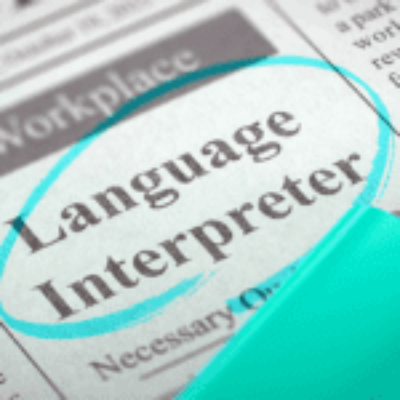
Argentina Celebrates San Martín Day to Honor a Founding Father of Latin America
In this post we will celebrate San Martín Day, Argentina’s beginning as a sovereign country! General José de San Martín was one of the greatest liberators of Latin America, and Argentinians commemorate San Martín Day by honoring his legacy. They hold different activities all throughout the third week of August every year.
The celebration of San Martín Day in Argentina is a special day and opportunity to pay homage to the prócer libertador (hero of Independence) on the streets, avenues, boulevards, and schools—some of which are even named after José de San Martín.
Read ahead to discover the history of the Latin American Independence hero José de San Martín, why he is considered one of the Founding Fathers of Latin America, and what are some of the local traditions of San Martín Day in Argentina.
¡Vamos!
Let’s go!
History of San Martín Day
General José Francisco de San Martín y Matorras was one of the most important liberators of South America along with Simón Bolívar and Bernardo O’Higgins.

His role was key for the Independence of Peru, Chile, and Argentina, where he is considered a national hero. He was actually addressed differently in these three countries.
- José de San Martín in Argentina is known as the Father of the Homeland (Padre de la patria) and The Liberator (El liberador).
- José de San Martín in Peru is known as the Freedom Founder of Peru (Fundador de la libertad de Perú), The Protector of Peru (El protector de Perú), The Republic Founder (El fundador de la República), and The General of the Arms (El generalísimo de las armas).
- José de San Martín in Chile is known as the Captain General (Capitán general).
José de San Martín was the founder of the Mounted Grenadier Regiment—a military academy and cavalry unit—after the First Triumvirate commissioned him as Lieutenant Colonel and ordered him to protect Buenos Aires.
San Martín was famous for being a brilliant strategist and for always being one step ahead. When in doubt, his superiors always appointed him to lead battalions. As soon as Ferdinand VII returned to the Spanish throne, he ordered to attack the colonies that were plotting towards independence.
Royalists were strong in upper Peru and had defeated two different campaigns, so San Martín created an ambitious plan to cross the Andes and get to Peru by sea. Many opposed this idea and internal rivalries started to appear, but the Father of the Homeland moved forward and founded the Andes Army.
San Martín drafted young slaves and citizens and turned them into a unit of 4000 disciplined, trained men. With them, he dominated the Spanish in the Battle of Maipu and the Battle of Chacabuco and led Chile to freedom. They could have only achieved this incredible deed with a clever strategy.
José de San Martín asked the Congress of Tucumán to announce the Independence of the United Provinces of South America before defeating the royalists. The objective was to act as a sovereign country and not as a simple insurrection. The more desinformation San Martín spread, the more fervor he provoked in his soldiers. At the same time he provoked fear in his opponents, who started deserting. He won over the course of 24 hours that took the crossing of the 21,000 feet tall Andes mountain range.
San Martín continued to fight battles favoring the independence of Chile, Peru and Argentina only to self exile later and live his last days with his daughter in Belgium and France.
When and How To Celebrate San Martín Day in Argentina?
Interestingly enough, people celebrate San Martin Day every third Monday of August to commemorate his death and not his birth, unlike many other Argentinian holidays.
The San Martín Day Argentinian celebrations actually last a whole week known as the Week of San Martín (semana sanmartiniana). On the first day of the week, the Argentinian military body holds traditions such as the reenactment of the freedom campaign on the grounds of the Mounted Grenadier Regiment. Elementary and middle school students watch the representation of the Declaration of Independence, and visit the Unity museum afterwards to see for themselves the saber of José de San Martín.
The next day, people celebrate a mass to honour the liberator’s life in the Metropolitan Cathedral of Buenos Aires in Argentina. His remains lie in a mausoleum full of flowers inside the church.

Later, in the Unity complex, a military fanfare interprets military marches that culminate with the intonation of the Argentinian National Anthem.
On the third day, around 2000 students witness the recreation of the legendary Andes crossing. Schools encourage children to create short films based on the Father of the Homeland achievements and they reward the best ones after the representation.
The last celebration happens in the San Martín Plaza. The Regiment organizes a ceremony, a marching band parade, and pays their respects with a military silence at 3 p.m. sharp, which was the time of San Martín’s passing.

More Than a Tradition
The celebration of the Día de San Martín in Argentina also serves as a reminder of the inspiration José de San Martín still is today and that spreads every year throughout South America.
According to oral tradition, José de San Martín gave up many political positions in order to pursue independence through an active participation in battle. He constantly faced the possibility of dying. Many others supported him and fought for his cause, and others even tried to save him from his opponents’ attacks.
He never surrendered or retreated and had to endure internal plotting against him until his dying day. If it weren’t for San Martín’s military vision and creativity, Argentina, Chile, and Peru would have had a different fate.
After he exiled, he continued to offer his military services to his homeland and was always in contact with key players of Argentina history.
More than a celebration or a tradition, honoring his legacy means to keep alive Argentina’s national identity.
Let’s Go to Argentina (¡Vamos a Argentina!)
The best way to understand the history of a country is visiting it and experiencing their traditions and beliefs yourself. There is definitely no price to going down the same streets where everything happened, seeing everything at first hand, and listening to the stories from the locals.
Travelling to Argentina on San Martín Day gives you the opportunity to experience how modern society remembers and honours their past that today is the backbone of their national identity. If you are planning to go, the best tip I can give you is to get the best out of the experience by overcoming the language barrier.
Learn Spanish before your upcoming trip and reach out to the people that are part of this story. Your travels will be easier by improving your Spanish conversation skills.
How to do this? Here at HSA we can tailor with you a Spanish package that fills your needs into individualized flexible lessons with our certified Spanish-speakers from Guatemala. Trust our 10 years of experience and become fluent in no time. Sign up for a free class today!

Do you love Hispanic culture? Check out our latest posts!
- Are Bilingual Children More Likely to Experience a Speech or Language Delay?
- Top 10 Places to Visit in Guatemala City, Guatemala
- Learn About Hispanic History: Were Hispanics Slaves?
- Celebrating Culture and Joy: The Magic of Carnival in Spanish-Speaking Countries
- 15 Mouth-Watering National Dishes of Latin America
- Discovering The Mayan Languages
- The 10 Most Common Spanish Surnames in The U.S
- Everything About Mexican Christmas Traditions
- What Is An Umbrella School? - June 20, 2024
- Car Parts Spanish Vocabulary List: Learn Using Pictures - February 1, 2024
- Discovering The Mayan Languages - January 4, 2024




